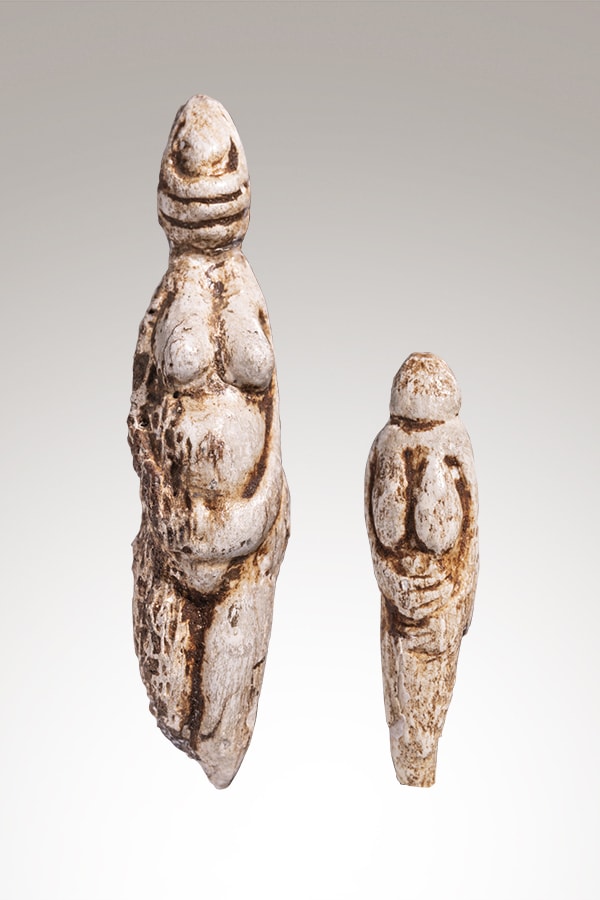The Venuses of Parabita
"Cave of the Venuses", Parabita (LE) | Approx. 18,000 B.C
These are two statuettes made of bone that represent standing female figures. The larger one (9 cm high and 2.1 cm wide), obtained from the long bone of a large herbivore, probably a Bos primigenius or an Equus caballus, has realistic features and is characterized by the fact that the face seems to be wrapped in a veil, perhaps a hairdress or a mask. The position of the arms, resting under the belly, suggests that it represents a pregnant woman. Due to the presence of a hole at its distal end and to the integrity of the piece, the object is believed to have had a decorative function. These stylistic and iconographic traits are commonly found in other female statuettes of the Mediterranean group (for the elongated shape of the head and for the workmanship of the lower part of the body), of the Rhine-Danube group (for the treatment of the face) and of the Russian group (for the position of the arms).
The workmanship of the smaller statue (6.1 cm high and 1.5 cm wide) is less refined and is believed to be a utensil with a “carved decoration”. Also in this case the position of the arms suggests that the object represents a pregnant woman. From the stylistic point of view, it is similar to specimens both from Eastern Europe (position of the arms), and from Western Europe (shape of the face).
 ROOM II - showcase 7A, 1.1 / 2
ROOM II - showcase 7A, 1.1 / 2






